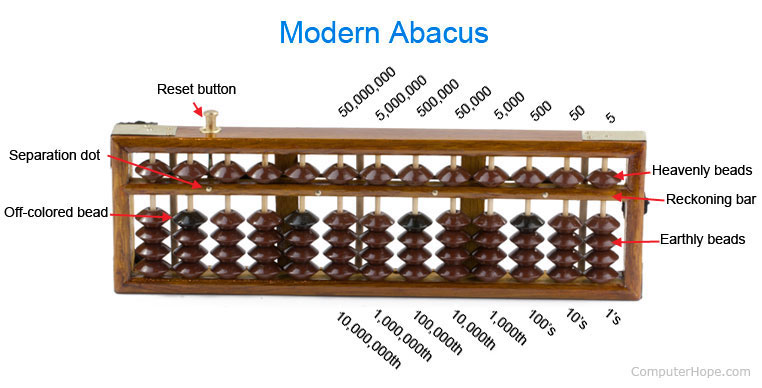Computer history - B.C. - A.D. 1000
Listed below are the important events in history relating to computers from early B.C. to A.D. 1000s.
50,000 B.C.
The first evidence of counting is dated back to around 50,000 B.C.
30,000 B.C.
Paleolithic peoples in Europe recorded numbers by notching tallies on bones, ivory, and stone.
4,000 B.C.
Metals began being created and used.
3,500 B.C.
The first evidence of writing is dated back to around 3,500 B.C.
3,400 B.C.
Egyptians developed a symbol for the number 10, making counting larger numbers easier.
3,300 B.C.
The Bronze Age began.
3,000 B.C.
Hieroglyphic numerals were first used in Egypt.
2,600 B.C.
Chinese introduced the abacus.
1,350 B.C.
Chinese used the first decimal.
1,350 B.C.
Iron began being developed.
1,000 B.C.

The Antikythera mechanism is believed to be first created.
300 B.C.
Mathematician Euclid published his Elements, 13 books that summarize all mathematical knowledge of the Greeks. 300 B.C. Euclid described the Euclidean algorithm for finding the greatest common divisor, considered the first algorithm. His axioms provided the foundation of mathematics and geometry and are still taught today.
The Salamis Tablet, Roman Calculi, and hand-abacus, much like today's abacus.
260 B.C.
The Maya developed base-20 system of mathematics, which introduced zero.
1,000 A.D.
A churchman named Gerbert d'Aurillac, who became Pope Sylvester II and introduced the abacus and Hindu-Arabic math to Europe.

